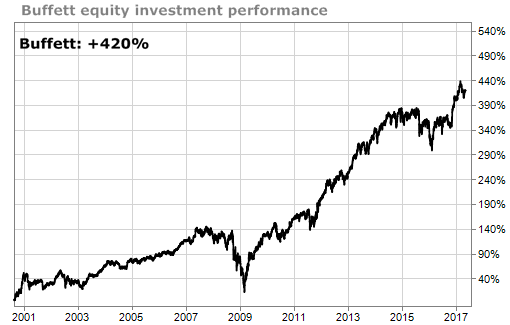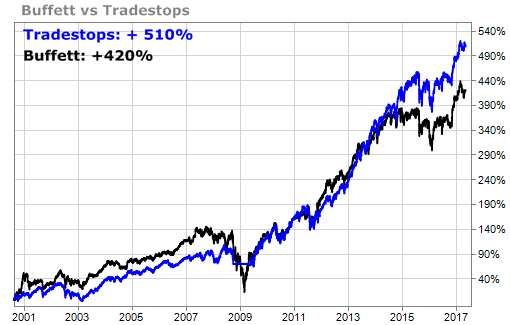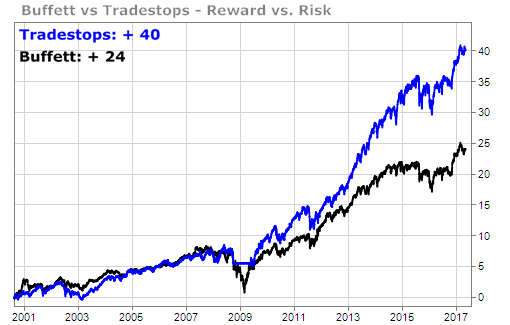You probably don’t think of yourself as having advantages over Warren Buffett when it comes to investing … but you do. Buffett admitted as much himself in a BusinessWeek interview about investment advice back in 1999. Here’s the money quote:
“The highest rates of return I’ve ever achieved were in the 1950s. I killed the Dow. You ought to see the numbers. But I was investing peanuts then. It’s a huge structural advantage not to have a lot of money. I think I could make you 50% a year on $1 million. No, I know I could. I guarantee that.”
Today, we’re going to show you how you can take the best of Buffett … and beat him at his own game. Let’s start with the Buffett baseline.
We recently analyzed Buffett’s track record back to August 2000. (That’s as much data as we could get our hands on so far.) Here’s what the performance of Buffett’s equity investments looks like since then.

Since late 2000, every $1 invested in Buffett’s equity picks would be worth $5.20 today. That’s a healthy gain of 420%.
It’s important to note that we’re not looking at the stock chart of Berkshire Hathaway (BRK). We’re just looking at the percentage gain of Buffett’s equity investments that are part of the Berkshire Hathaway portfolio of investments.
At TradeStops we’re all about making portfolios better by optimizing the profit potential of the existing investments … even Buffett’s portfolio.
Using the tools of TradeStops, we were able to take the exact same portfolio of equities and squeeze out even more profit. Take a look:

How’d we do it? Here are the rules for beating Buffett with TradeStops:
- Start with Buffett’s equity investments from his Berkshire Hathaway (BRK) portfolio.
- Sell any investment if the TradeStops Stock State Indicator (SSI) turns red.
- If Buffett still owns an investment that turns from red SSI to green SSI, then buy it.
- Use the TradeStops Risk Rebalancer to create a risk-balanced portfolio.
Not only does this TradeStops + Buffett system make more money, it does so while taking less risk. The smart way to evaluate reward vs. risk is by looking at Risk Adjusted Returns. How many units of reward did you receive for each unit of risk taken?
So what happens when we look at Buffet’s performance in terms of reward versus risk?

Make more and risk less … even than Buffett,
TradeSmith Team





